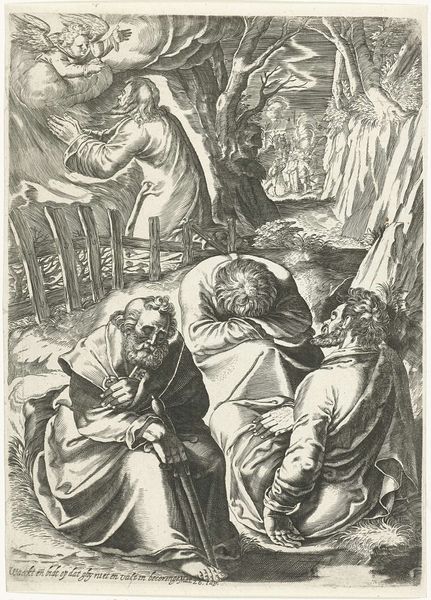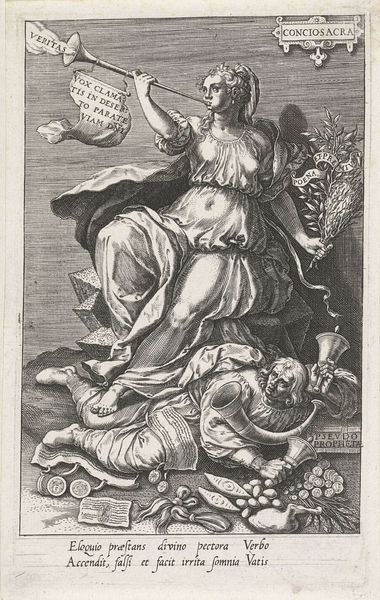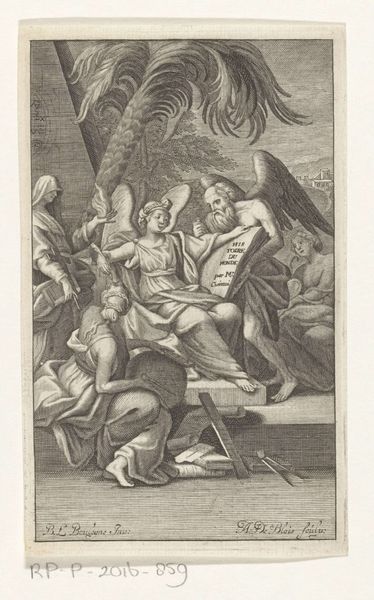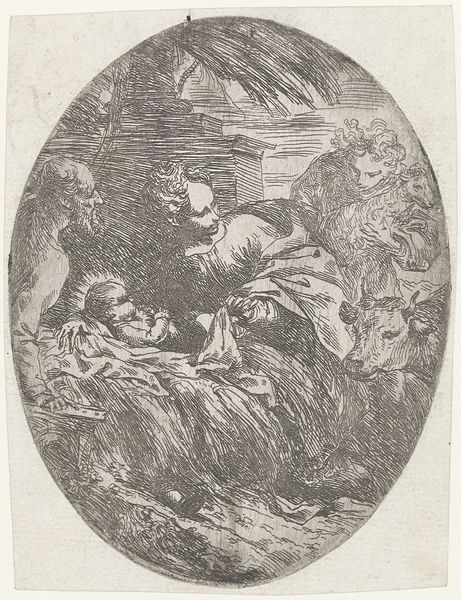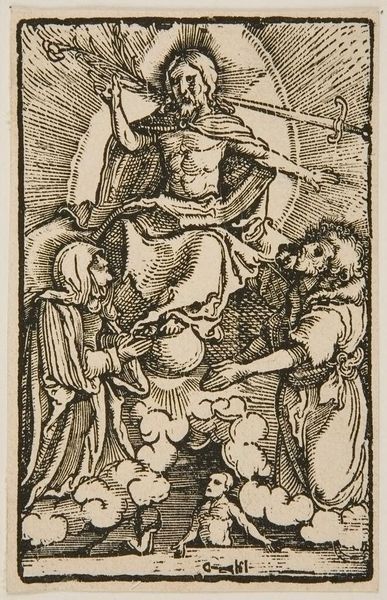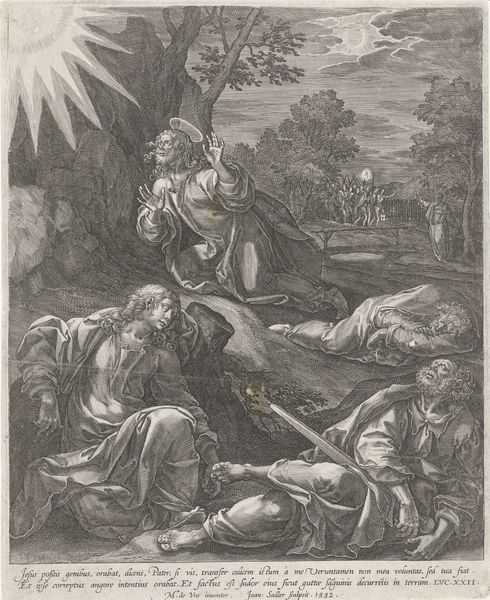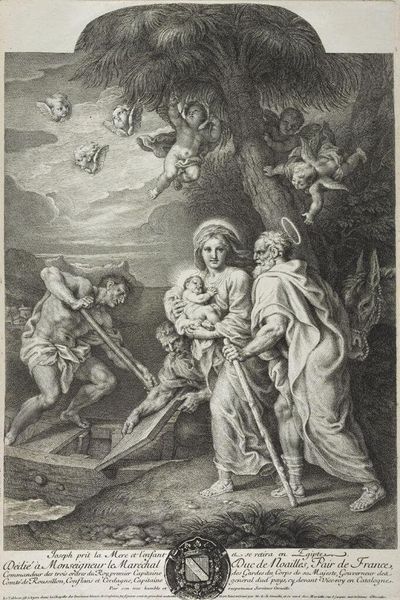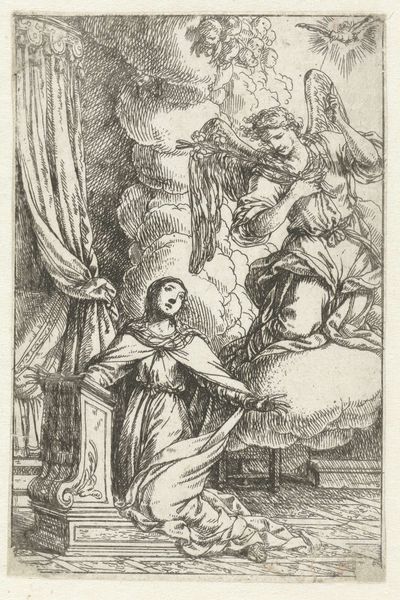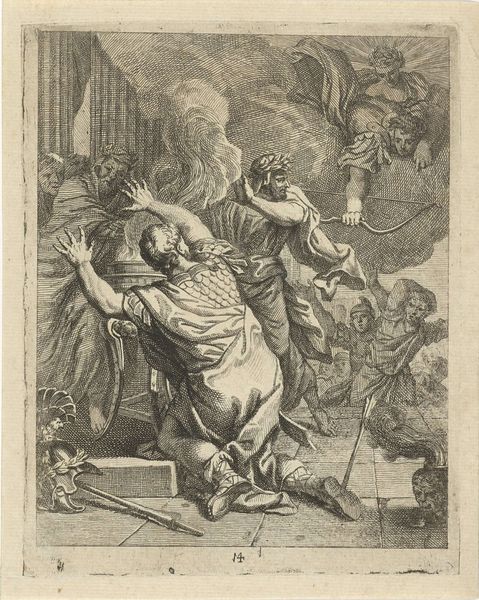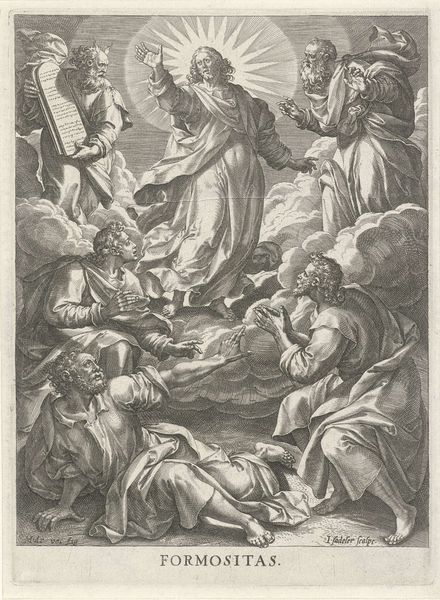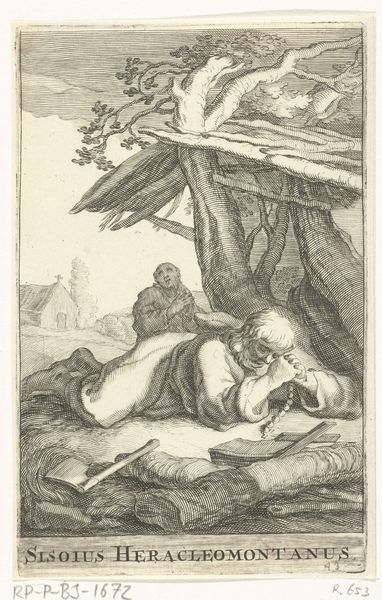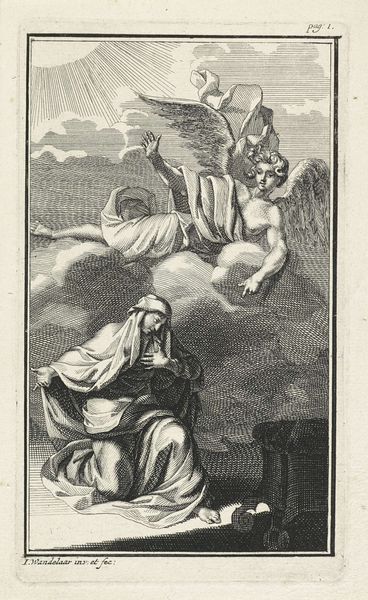
print, engraving
#
narrative-art
#
baroque
# print
#
figuration
#
history-painting
#
engraving
Dimensions: height 133 mm, width 83 mm
Copyright: Rijks Museum: Open Domain
Curator: Here we have Wenceslaus Hollar’s 1670 engraving, "Christus in de hof van Gethsemane," housed here at the Rijksmuseum. It depicts Christ in the Garden of Gethsemane. Editor: My immediate response is one of somber reflection. The tonal range, expertly achieved in this engraving, contributes to the feeling of subdued drama and a palpable sense of impending fate. Curator: Precisely. Hollar, a master engraver, employs a highly sophisticated use of line. Note the density and direction of the lines to model form and create contrast. He uses cross-hatching to build up the shadows, adding weight to the figures, grounding them within their environment. Look at the draping of robes and their texture and you find both structure and movement through those tiny carefully designed patterns. Editor: This work serves as an excellent reminder of how historical context shapes narratives. This scene is heavy with the weight of betrayal and sacrifice. This speaks to complex relations of religious expression, and of power, authority, doubt. What does faith ask of individuals within this context? Curator: From a formal perspective, we see the conventional pyramidal composition guiding the viewer's eye from the sleeping disciples in the foreground up to Christ, illuminated and visited by an angel. The clouds themselves have mass; they define space just as effectively as the figures. The visual clarity that we find when looking at Christ is compelling as his divine importance is represented with careful consideration and use of light. Editor: Right, and this emphasis also touches on issues of marginalization. Who gets the divine visitation, the divine protection, versus those, like the disciples below, who are left to wait? Religious art isn’t just a retelling of biblical narratives, but also a visual echo chamber. We have the ability to decode broader narratives of power, of chosenness, of spiritual crisis in these artworks. Curator: That reading, I think, complements Hollar's superb rendering of emotional tension through purely formal means. The dramatic light and shadow, combined with the positioning of the figures, evokes that moment of crucial transition when mortality encounters eternity. Editor: Ultimately, it’s the persistent tensions—between doubt and faith, darkness and light—that I continue to reflect on. Thank you, Wenceslaus Hollar, for making us consider the complexity of religious history. Curator: Yes, a study of the graphic skills is not a waste, as these forms echo to create multiple possibilities of meaning.
Comments
No comments
Be the first to comment and join the conversation on the ultimate creative platform.
